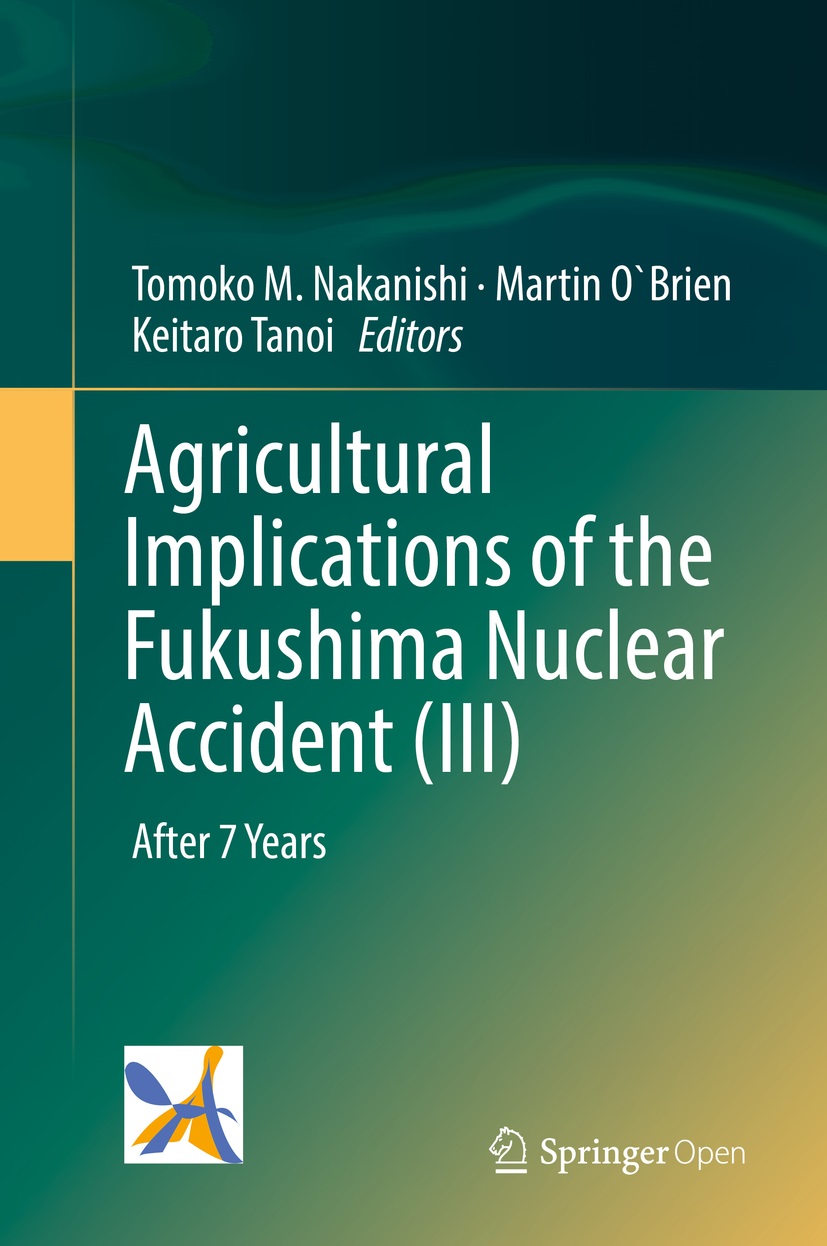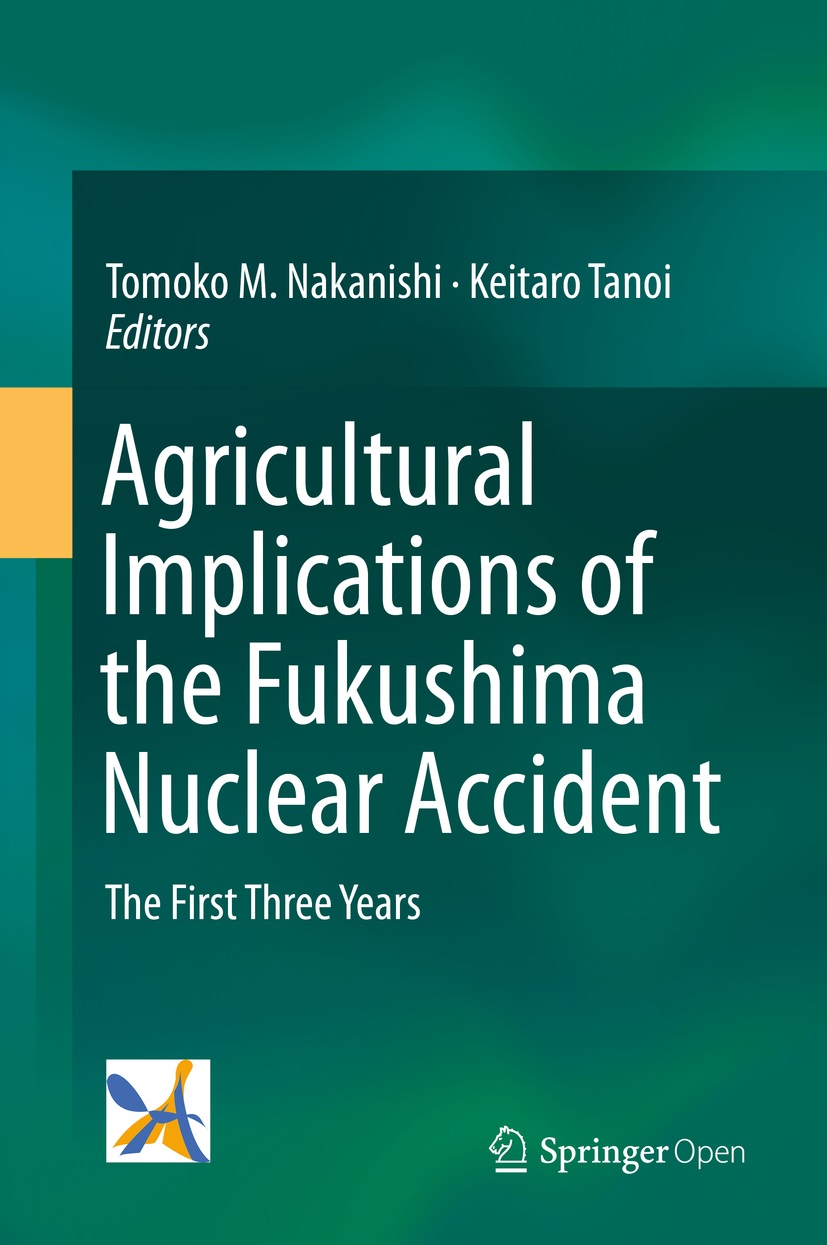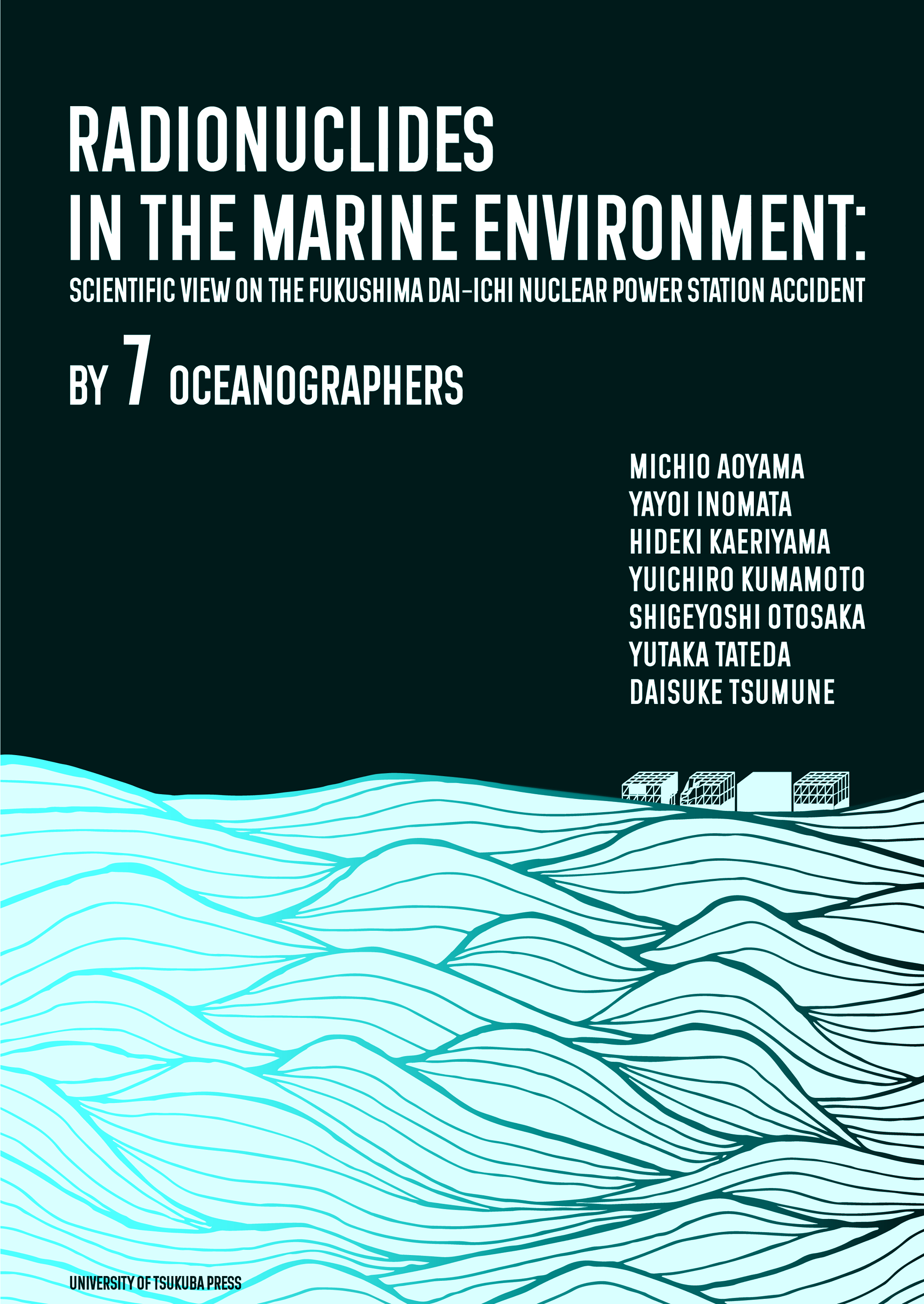
Title
Agricultural Implications of the Fukushima Nuclear Accident (III) After 7 Years
Size
248 pages, hardcover
Language
English
Released
2019
ISBN
978-981-13-3217-3
Published by
Springer Singapore
Book Info
See Book Availability at Library
Agricultural Implications of the Fukushima Nuclear Accident (III) - After 7 Years
Japanese Page
A large amount of radioactive materials were released into the environment after the accident at the Fukushima Daiichi Nuclear Power Station of Tokyo Electric Power Company, caused by an earthquake on March 11, 2011. Many areas where radioactive materials were deposited affected agriculture, fisheries, livestock, and forestry industries that produce our food. Many professors and students of the Graduate School of Agricultural and Life Sciences, the University of Tokyo, have entered the disaster-stricken areas to conduct surveys and research. We compiled the "Agricultural Implications of the Fukushima Nuclear Accident" series to summarize the field data obtained through these activities and disseminate it to the world, making it available for free download. The 1st book in the series (https://link.springer.com/book/10.1007/978-4-431-54328-2) from 2013 has been downloaded more than 135,000 times as of August 2019 and has been widely read around the world. The 2nd book in the series (https://link.springer.com/book/10.1007%2F978-4-431-55828-6) from 2016, which covers the events up to the 3rd year after the accident, has been downloaded 75,000 times as of August 2019. The book introduced here is the third book that was compiled seven years after the accident.
In this book, we discuss the following topics: the transfer of radioactive cesium to rice paddies and rice plants, the absorption of radioactive cesium by soybeans, the physiological observations in pigs exposed to radiation, the fixation of cesium by weathered biotite (a type of clay mineral), the accumulation of radioactive cesium in Koshiabura, the transfer of radioactive cesium to peach trees, the seasonal variation in radioactive cesium in poplar trees, the radioactive cesium contamination of Quercus serrata trees, the fisheries industry in Fukushima Prefecture 6 years after the accident, visualization of ion transport in plants, and rapid measurement of strontium-90 using ICP-MS.
These results provide information that we would like people overseas as well as in Japan to become aware about. All contents are written in English, but there are many figures and photos to enable Japanese students to understand the findings without much trouble. This book is available as a free pdf.
(Written by TANOI Keitaro, Professor, Graduate School of Agricultural and Life Sciences / 2019)
Table of Contents
Tomoko M. Nakanishi
2. Transfer of Radiocesium to Rice in Contaminated Paddy Fields Fields
Keisuke Nemoto and Naoto Nihei
3. Cesium Translocation in Rice
Keitaro Tanoi, Tatsuya Nobori, Shuto Shiomi, Takumi Saito, Natsuko I. Kobayashi, Nathalie Leonhardt, and Tomoko M. Nakanishi
4. Absorption of Radioceasium in Soybean
Naoto Nihei and Shoichiro Hamamoto
5. An Observational Study of Pigs Exposed to Radiation
Junyou Li, Chunxiang Piao, Hirohiko Iitsuka, Masanori Ikeda, Tomotsugu Takahashi, Natsuko Kobayashi, Atsushi Hirose, Keitaro Tanoi, Tomoko Nakanishi, and Masayoshi Kuwahara
6. A Composting System to Decompose Radiocesium Contaminated Baled Grass Silage
Takahiro Yoshii, Tairo Oshima, Saburo Matsui, and Noboru Manabe
7. Weathered Biotite: A Key Material of Radioactive Contamination in Fukushima
Toshihiro Kogure, Hiroki Mukai, and Ryosuke Kikuchi
8. Radiocesium Accumulation in Koshiabura (Eleutherococcus sciadophylloides) and Other Wild Vegetables in Fukushima Prefecture
Naoto Nihei and Keisuke Nemoto
9. The Transition of Radiocesium in Peach Trees After the Fukushima Nuclear Accident
Daisuke Takata
10. Application of the Artificial Annual Environmental Cycle and Dormancy-Induced Suppression of Cesium Uptake in Poplar
Yusaku Noda, Tsutomu Aohara, Shinobu Satoh, and Jun Furukawa
11. Radiocesium Contamination in Forests and the Current Situation of Growing Oak Trees for Mushroom Logs
Natsuko I. Kobayashi, Ryosuke Ito, and Masaya Masumori
12. Radiocesium Dynamics in Wild Mushrooms During the First Five Years After the Fukushima Accident
Toshihiro Yamada
13. The Spatial Distribution of Radiocesium Over a Four-Year Period in a Forest Ecosystem in North Fukushima After the Nuclear Power Station Accident
Masashi Murakami, Takahiro Miyata, Natsuko Kobayashi, Keitaro Tanoi, Nobuyoshi Ishii, and Nobuhito Ohte
14. Parallel Measurement of Ambient and Individual External Radiation in Iitate Village, Fukushima
Yoichi Tao, Muneo Kanno, Soji Obara, Shunichiro Kuriyama, Takaaki Sano, and Katsuhiko Ninomiya
15. Mobility of Fallout Radiocesium Depending on the Land Use in Kasumigaura Basin
Shuichiro Yoshida, Sho Shiozawa, Naoto Nihei, and Kazuhiro Nishida
16. Challenges of Agricultural Land Remediation and Renewal of Agriculture in Iitate Village by a Collaboration Between Researchers and a Non-profit Organization
Masaru Mizoguchi
17. Radiocesium Contamination on a University Campus and in Forests in Kashiwa City, Chiba Prefecture, a Suburb of Metropolitan Tokyo
Kenji Fukuda
18. The State of Fisheries and Marine Species in Fukushima: Six Years After the 2011 Disaster
Nobuyuki Yagi
19. Visualization of Ion Transport in Plants
Ryohei Sugita, Natsuko I. Kobayashi, Atsushi Hirose, Keitaro Tanoi, and Tomoko M. Nakanishi
20. 90Sr Analysis Using Inductively Coupled Plasma Mass Spectrometry with Split-Flow Injection and Online Solid-Phase Extraction for Multiple Concentration and Separation Steps
Makoto Furukawa and Yoshitaka Takagai



 Find a book
Find a book


 eBook
eBook
